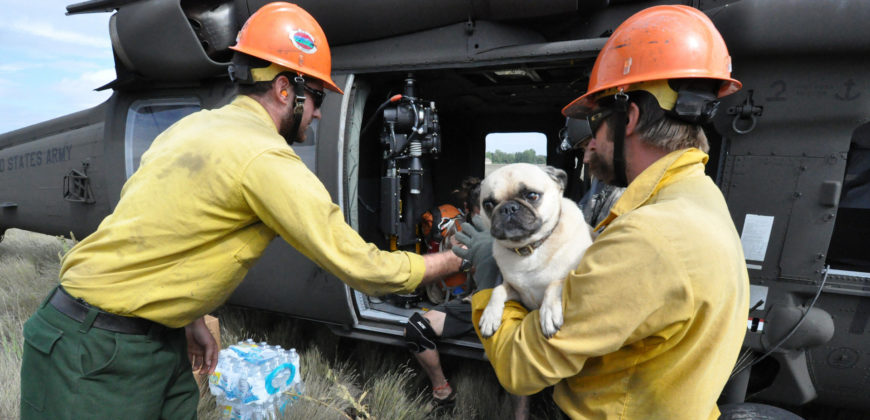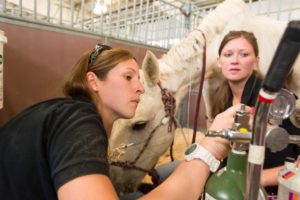
By Dr. Ragan Adams
As the hot, dry summer envelops Colorado and wildfires burn across the state, the news fills with horrifying images, heartfelt evacuation stories and heroic emergency responses. The steady flow of fiery reports is a stark reminder that natural disaster could suddenly disrupt any of our lives.
Rather than dreading a potential fire, use your energy to prepare. Friday, July 15, is National Pet Fire Safety Day – a perfect time to make sure you and your pets are ready for evacuation and emergency shelter, should the need ever arise.
Preparing for your pets’ welfare in an emergency will help first responders, evacuation groups and emergency animal shelters better care for the animals, and will give you peace of mind. The Federal Emergency Management Agency has a comprehensive Family Emergency Guide, but for the 60 percent of households with pets, preparation must be made for animals as well.
Effective emergency planning involves backup help from other people; a basic understanding of emergency response and resources in your community; setting aside needed animal feed and supplies; compiling health records and care instructions; and clearly communicating this information in written plans and simple signage.
Planning for pets

Start by making with friends, family and neighbors a “buddy plan” that addresses the needs of your pets, horses or livestock. You may be at work and unable to access your animals when a fire, flood or other disaster unfolds. As part of the plan, make sure your buddies have written permission to care for your animals and have access to your pet emergency kit and kennels.
Know evacuation routes. Fires can blow up quickly, so it is best to identify multiple evacuation route options.
Put a sticker or sign on your house to inform fire personnel that there are animals inside. It’s a good idea to place this kind of emergency sticker adjacent to entrances, such as the door from your garage to home, where the information would be easily visible to responders.
The Colorado Division of Homeland Security and Emergency Management urges residents to sign up for emergency alerts on county websites. The division offers a list of local emergency management websites, and other ways to stay updated on local emergencies.
Create a “ready-go” bag for your pets that includes:
- Food, water and medications for three days
- Copies of vaccination records and medical histories
- List of important animal emergency contacts, such as the names and locations of veterinary offices
- Collars with tags and microchip information
- Photos of you with your pet
- Bowls, can openers, spoons
- Cat litter, scoop and pan
- Pet first-aid kit
- Bedding, crate or carrier
- Leashes, harnesses
- Toys, grooming supplies
- Paper towels, trash bags, disinfectant
- Towels, gloves and hand sanitizer
Learn more about pet preparations in Ready Colorado’s Plan for Pets guide.
Planning for non-commercial livestock
Many families own acreage on which they keep small numbers of horses, goats, chickens, sheep and/or cattle whose emergency needs also must be considered. The above readiness tips may be revised for larger animals, with preparation on a different scale.
For instance, rather than crates, you might need a trailer; instead of dog food, you might need to set aside hay and grain. When identifying evacuation routes, you might need to make sure they will accommodate a horse or livestock trailer.
Prepare for larger animals with:
- Three days of food, water and medication
- Registration papers and brand inspection cards
- Copies of veterinary records
- List of animal emergency contacts, such as animal control, animal shelter, veterinarians
- Halters, lead ropes
- First-aid kit
- Grooming tools
- Water and feed buckets
- Fly spray
- Tack
- Muck bucket, rake and shovel
Learn more about livestock preparations in Ready Colorado’s Plan for Livestock guide. Taking these steps may help calm your anxiety about the potential for natural disaster – and will provide concrete help to ensure animal safety when time is of the essence.
Dr. Ragan Adams is a veterinarian and coordinator of Colorado State University’s Veterinary Extension team. She is a senior research associate in the Department of Clinical Sciences and produced “Saving pets, saving people,” a video about how two Colorado counties developed animal disaster response plans.